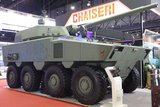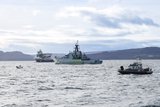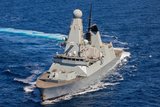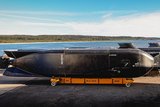UK and US marines train to guard nuclear deterrent submarines
UK and US Marines training together on a no-fail basis to protect submarines carrying the nuclear deterrent. (Picture: Royal Navy/MoD/Crown Copyright)
The UK Royal Marines who guard the Vanguard-class ballistic missile submarines that constitute the country’s nuclear deterrent have just completed their autumn training session – Tartan Eagle – alongside their US Marine Corps compatriots.
The training is delivered in two sessions each year. The Summer training session of Tartan Eagle takes place in Kings Bay, Chesapeake in Virginia, and Bangor, Washington. The Autumn session takes place on site at the Clyde Naval Base in Scotland and at the Northumbria Range complex over the course of two weeks in November.
The Royal Marines of 43 Commando Fleet Protection Group, who constitute the
Already have an account? Log in
Want to keep reading this article?
More from Naval Warfare
-
![How the use of artificial intelligence will affect the US Coast Guard’s acquisitions]()
How the use of artificial intelligence will affect the US Coast Guard’s acquisitions
The USCG is pursuing AI tools to improve the way the service conducts its procurement and fielding processes.
-
![US Coast Guard prepares procurement of next-gen surface search radar]()
US Coast Guard prepares procurement of next-gen surface search radar
The NXSSR will replace five in-service capabilities and be the US Coast Guard’s primary collision avoidance system.
-
![MBDA-led DragonFire’s latest trials move the LDEW system closer to UK Navy integration]()
MBDA-led DragonFire’s latest trials move the LDEW system closer to UK Navy integration
The DragonFire lines up with other European laser-directed energy weapons being developed in collaboration with MBDA.
-
![US Coast Guard pursues solutions to increase maritime domain dominance]()
US Coast Guard pursues solutions to increase maritime domain dominance
The USCG is seeking technologies, services and applications to better connect its assets and speed up the decision-making process.
-
![Canadian Coast Guard’s OOSV delivery is “major milestone” in fleet modernisation]()
Canadian Coast Guard’s OOSV delivery is “major milestone” in fleet modernisation
The Polar Class 6 platform is the largest CCG science-dedicated vessel and will operate on the country’s east coast.
-
![How the Anduril-HHI autonomous ship plan fits in with the US Navy’s MASC programme]()
How the Anduril-HHI autonomous ship plan fits in with the US Navy’s MASC programme
The new modular vessel is expected to be developed for both commercial and defence use, with a heavy focus on production speed and mission flexibility.
























